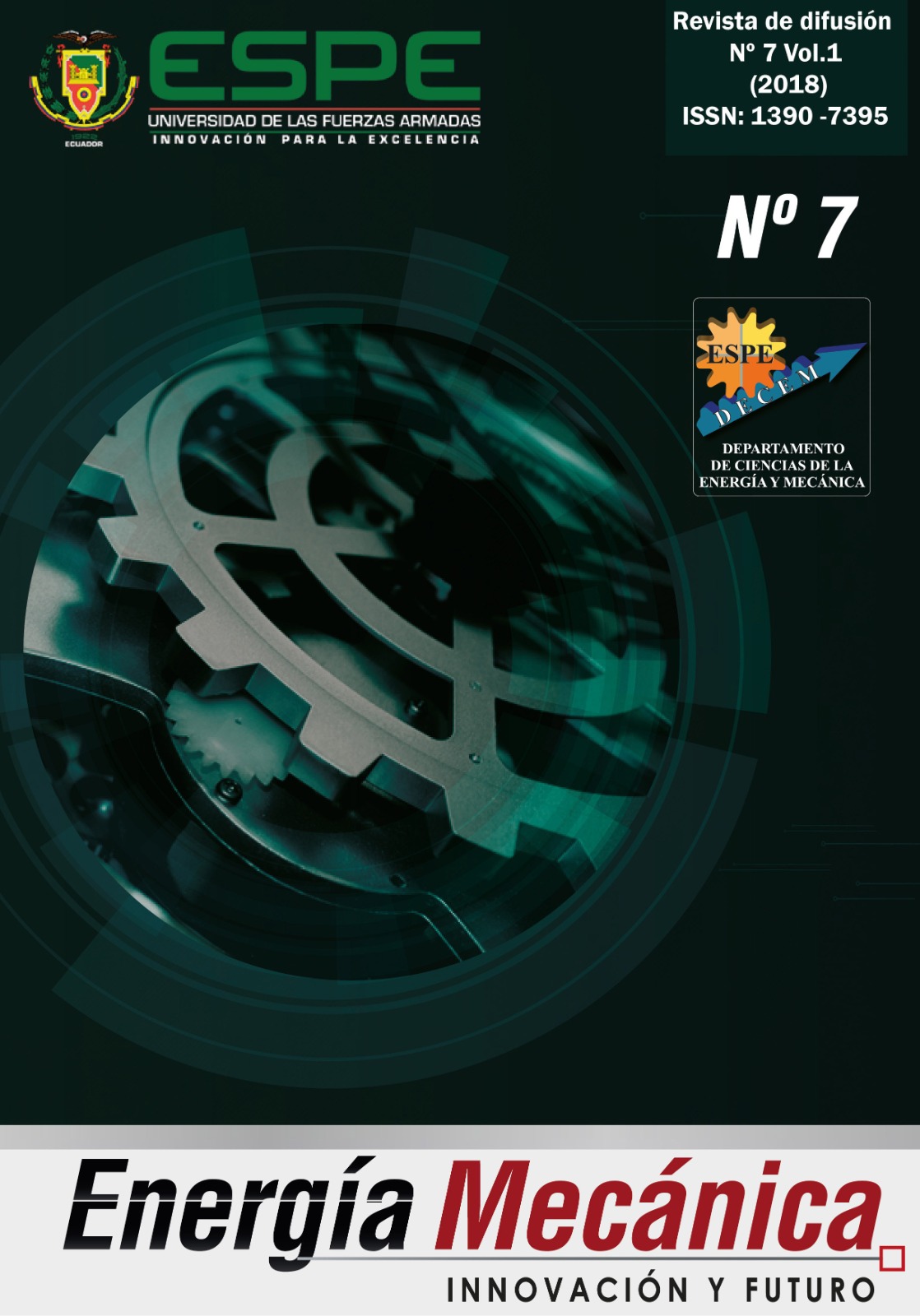TUBERÍA FORZADA (PENSTOCK) PARA GENERACIÓN DE ENERGÍAHIDROELÉCTRICA EN EL ECUADOR Y ANÁLISIS DE PROPAGACIÓN DE FISURAS.
DOI:
https://doi.org/10.24133/EMIF.V7.12i.3927Resumen
El presente trabajo tuvo como objetivo diseñar una
tubería forzada (penstock) de 2,5 metros de diámetro,
utilizando los criterios de falla tales como: energía de
distorsión (Von Mises), de cortante máximo (Tresca)
y de Goodman aplicando un factor de seguridad de 2
en aceros T445 y BS1501-223, materiales adecuados
para este uso en condiciones climáticas del Ecuador y
con una fluctuación del esfuerzo debido al efecto de
golpe de ariete de 7500 veces al año.
A través de la suposición de una fisura detectada de
4 mm se analizó en función del material, el proceso
de crecimiento o propagación de la falla utilizando
la Norma BS7910:2005, para especificar la vida útil
de la tubería o tiempo de operación una vez que ha
sido detectada la falla y de esta manera recomendar
un período de inspección y mantenimiento.
Finalmente, se determinó la relación de fractura del
factor de intensidad de tensión elástica aplicada a
la tenacidad de la fractura, su condición de colapso
plástico para evaluar la falla en el diagrama FAD
(Failure Assessment Diagram).
Palabras clave:
Colapso plástico, Criterios de falla, Norma
BS7910:2005, Tubería Forzada.
ABSTRACT
The objective of this paper was to design a penstock
of 2.5 meters in diameter, using the criteria of failure
such as: distortion energy (Von Mises), maximum
shear (Tresca) and Goodman, applying a safety factor
of 2 in T445 and BS1501-223 steels, that are suitable
materials for this use in the Ecuadorean climatic
conditions with a fluctuation of the effort due to the
effect of water hammer of 7500 times a year.
Through the assumption of a detected crack of 4 mm,
the process of growth or propagation of the failure
was analyzed according to the material using the
BS7910: 2005 standard to specify the useful life of
the pipe or operation time once the failure has been
detected and, in this way, recommend a period of
inspection and maintenance.
Finally, the fracture ratio of the elastic tension
intensity factor applied to the fracture tenacity, its
plastic collapse condition to assess the failure in the
FAD (Failure Assessment Diagram) diagram, was
determined.
Keywords:
Plastic Collapse, Failure Criteria, BS7910:2005
Standard, Penstock.
REFERENCIAS
[1] Andrade, L. (2015). Mecánica de la Fractura.
Módulo de Diseño Avanzado. Sangolquí:
Universidad de las Fuerzas Armadas – ESPE.
[2] Arana J, González J. (2002). Mecánica de
Fractura. Bilbao: Universidad del País Vasco.
[3] Hosford W. (2005). MECHANICAL BEHAVIOR
OF MATERIALS. (págs. 227 - 245). USA:
Cambridge.
[4] Bambei John,(2012), Steel Penstocks, United
States of America, Second Edition, ASCE.
[5] Budynas-Nisbett, (2006), Shigley’s Mechanical
Engineering Design, United States of America,
Eighth Edition, Mc Graw-Hill
[6] Norton L. Robert, (1999), Diseño de Máquinas,
México, Primera Edición en español, Pearson.
[7] British Standard Institution. (2005). Guidance
on Methods for Assessing the Acceptability of
Flaws in Structures. BS7910:2005.
[8] ASME (2007), Code for Pressure Piping: Power
Piping. B31.1-2004
[9] Hou Jian-Guo, An Xu-Wen, He Ying- Min, (2004), Scholl of Civil Engineering, Wuhan University,
P.R.China. ASME Digital Collection.
[10] Reid, C.N.and Baikie, B.L., “Choosing a Steel
for Hydroelectric Penstocks” Case Histories
Involving Fatigue and Fracture Mechanics,
ASTM STP- 918,C.M.Hudsonand T.P.Rich,Eds,
American Society for Testing and Materials,
Philadelphia.
[11] http://www.serviciometeorologico.gob.ec/clima
Comments on Design Methods of Penstocks
Publicado
Número
Sección
Licencia
Los autores que publican en esta revista están de acuerdo con los siguientes términos:
Los autores conservan los derechos de autor y garantizan a la revista el derecho de ser la primera publicación del trabajo al igual que licenciado bajo una Creative Commons Attribution License que permite a otros compartir el trabajo con un reconocimiento de la autoría del trabajo y la publicación inicial en esta revista.
Los autores pueden establecer por separado acuerdos adicionales para la distribución no exclusiva de la versión de la obra publicada en la revista (por ejemplo, situarlo en un repositorio institucional o publicarlo en un libro), con un reconocimiento de su publicación inicial en esta revista.
Se permite y se anima a los autores a difundir sus trabajos electrónicamente (por ejemplo, en repositorios institucionales o en su propio sitio web) antes y durante el proceso de envío, ya que puede dar lugar a intercambios productivos, así como a una citación más temprana y mayor de los trabajos publicados.

